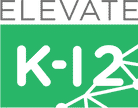Starting on an educational, career, or cultural exchange journey to the United States under the J-1 visa program is both an exciting opportunity filled with promise and a huge hassle. The process can feel daunting if you aren’t armed with the proper information.
The Form DS-2019, also known as Certificate of Eligibility for Exchange Visitor (J-1) Status, is the golden ticket for participants in the exchange visitor program. It opens doors to immersive experiences, cross-cultural learning, internships, jobs, and professional development. For many, it’s not just a formality; it’s the key to a world of new perspectives, friendships, and academic and career growth.
In this guide, we delve into everything program participants need to know about the DS-2019 Form. With the proper knowledge, anyone can navigate this essential document with confidence.
What Is the DS-2019 Form?
Individuals seeking to engage in educational and cultural exchanges within the United States use the DS-2019 Form. This form is a foundational document specifically designed for participants in the J-1 visa program. It outlines the terms, conditions, and purpose of the exchange visitor’s stay.
For instance, let’s say a graduate student from Spain is conducting research at a renowned university here in the U.S. as part of pursuing his degree. According to recent trends, more than 15,000 international students travel to the U.S. each year to further their education.
In this case, the university issues the graduate student’s DS-2019 Form as his program sponsor. It includes the scope of his research project, the duration of his stay, and the obligations he must fulfill during his time in the U.S. as an international student.
Key Components of the DS-2019 Form
Now that we’ve explained the significance of the DS-2019 Form in the J-1 visa program, let’s look more closely at its key components to understand the information required from exchange participants.
Different Form Sections
Navigating the DS-2019 Form requires you to understand each section. These sections ask for specific information from the applicant:
- Section 1 typically includes personal information, such as name, date of birth, and country of citizenship of the J-1 exchange visitors.
- Section 2 asks for program-specific details like the program sponsor and goals of the exchange.
- Section 3 includes the program’s start and end date.
- Section 4 includes the participant’s exchange visitor category. This could be student, scholar, professor, trainee, or something similar.
- Section 5 includes the sources of the participant’s financial support during the program.
- Section 7 asks for the name, telephone number, and other contact information of the program sponsor’s responsible officer.
The responsible officer will fill out the rest of the form. Note that the participant might need the name and contact info for the officer to enter the country.
Important Dates and Deadlines
The DS-2019 Form’s start date and end date mark the duration and validity of the exchange visitor’s program. Participants cannot arrive more than 30 days before the date listed in Section 3 of the DS-2019 Form, and they have 30 days after the program ends to leave the country. This last 30 days is a grace period to make leaving the country and heading home an easier experience for the program participant.
Sponsor and Program Information
An important part of the DS-2019 Form is the sponsor and program details. It’s the program sponsors’ job to vet and choose qualified foreign nationals. The chosen participants will then take part in their exchange visitor program. The sponsor provides assistance and oversight to exchange visitors while they’re here.
The Role of the DS-2019 Form in the J-1 Visa Process
As we consider the role of the DS-2019 Form in the J-1 visa process, let’s uncover the steps involved in getting this required document for exchange visitors.
Getting a J-1 Visa
A J-1 visa lets exchange visitors enter the United States for their program. Completing the DS-2019 Form is a crucial step in obtaining a J-1 visa. The participants make the DS-2019 request to the sponsoring organization, such as a university.
The next step for participants is scheduling a visa interview at the nearest U.S. consulate or embassy in their home country. For example, our graduate student from Spain will schedule his visa interview at the U.S. Embassy in Madrid. He will bring his completed DS-2019 Form, passport, proof of financial support during the J-1 program and proof that he lives in Spain. Before the interview, it’s a good idea to double-check what documentation is required.
The interview portion of this step should be pretty straightforward for participants. They will answer questions about their program, financial support, and other relevant details.
Part of this application process is paying a fee to the Department of Homeland Security (DHS). The sponsoring organization could pay this fee on behalf of participants. Other fees may be required depending on the participant’s program.
Preparing for Arrival in the U.S.
As exchange visitors prepare for their trip to the United States, the DS-2019 Form is their guide. They will present this document to immigration officials upon entering the country. It lists the essential details about the purpose of the visit, program duration, and sponsor information.
Let’s say our hypothetical J-1 student from Spain arrives at John F. Kennedy International Airport in New York. He will present his DS-2019 Form to the immigration officer. The officer will then review the document, stamp his passport with the J-1 visa, and finally welcome the student to the United States.
Extending or Changing Your U.S. Visa Status
During their exchange program, participants may need to extend their stay, or they may need to change their visa status. Once again, the DS-2019 Form guides participants through the steps to maintain legal status.
Let’s say that midway through his research project, the graduate student makes a discovery that will extend the project by more than 30 days. In this case, the program coordinator at the university will issue a new DS-2019 Form with the updated dates. The program sponsor’s responsible officer will review the form and supporting documents. The Department of State needs to approve the request.
Once approved, the graduate student can continue his research uninterrupted. It’s a win-win for everyone.
Eligibility and Requirements: Who Needs the DS-2019 Form?
The DS-2019 Form is required for anyone participating in exchange visitor programs. This includes students, researchers, and teachers from more than 160 countries. It could also be cultural exchange program participants. Each category has specific eligibility criteria, and applicants must meet these requirements to receive the DS-2019 Form from their sponsor organization.
Leaving our J-1 student from Spain to his research, let’s consider a teacher from China who has enrolled in a cultural exchange teaching program in the U.S. As part of her program, she needs to meet the requirements of teachers in the J-1 program, demonstrate English proficiency, and complete a cultural orientation before receiving her DS-2019 Form.
Unlike the graduate student, the teacher is planning to bring her spouse and two children as dependents from her home country to the U.S. with her on a J-2 visa. In this case, each member of her family will need an individual DS-2019 Form.
How to Get the Form DS-2019
We’ve mentioned that Form DS-2019 is issued by the sponsor organization, but let’s take a closer look at how to get this essential form.
Contact a Sponsor Agency
When our teacher decided she wanted to experience a cultural immersion teaching program in the U.S., she first needed to find a sponsoring agency. This is an organization that offers this type of program to foreign nationals. The sponsor will oversee her application process, review her eligibility criteria, and facilitate the issuance of her DS-2019 Form.
These programs typically have a program coordinator who is the main point of contact for applicants and participants once they’re accepted.
Fulfill the Sponsor’s Requirements
Applicants for exchange programs need to fulfill the requirements of the sponsoring organization. Requirements could be demonstrating a solid grasp of the English language, having specific qualifications or certifications, or passing a background check.
The teacher from China needs to provide her teaching credentials, pass a language proficiency test, and attend an orientation hosted by her sponsor. Completing these requirements is a necessary step toward getting her DS-2019 Form.
Follow the Review and Approval Process
Once applicants submit all the necessary materials, they need to go through the review and approval process. The sponsoring agency also guides this. It usually involves a thorough assessment of the applicant’s qualifications.
After this review, the sponsoring agency will approve the accepted applications and issue the DS-2019 Form to program participants.
Tips To Avoid Common Mistakes With the DS-2019 Form
Receiving the DS-2019 Form requires attention to detail and awareness of common pitfalls. Here are some of the most common mistakes and proactive steps to avoid them:
- Including incorrect personal information: Double-check all personal details provided on the DS-2019 Form. Make sure everything is accurate, including names, birthdates, and other information.
- Misunderstanding J-1 program start date and end date: Understand the exact duration of the exchange program as outlined in the DS-2019 Form. Plan travel, accommodations, and commitments according to these dates.
- Overlooking the necessity of sponsor information: Ensure all sections requiring sponsor information are completed accurately. This includes the sponsor’s name, address, and program officer details.
- Failing to sign and date the form: Before submitting the DS-2019 Form, ensure all required signatures and dates are completed. Unsigned or undated forms may lead to delays or complications in the application process.
- Not updating changes in personal circumstances: Promptly inform the sponsoring agency of any changes in personal circumstances, such as address changes, contact information updates, or changes in program plans.
By adhering to these guidelines, applicants can confidently navigate the application process, minimizing the risk of errors or complications.
What To Do After You Get Your DS-2019 Form
Receiving the DS-2019 Form is a big step forward for participants in the J-1 visa program. Below are the essential steps to take after obtaining the DS-2019.
Step 1: Prepare for the Visa Interview
The visa interview is critical in getting the J-1 visa, and preparation is the key to success. Applicants should have all required documents, including their DS-2019 Form, passport, proof of financial support, and supporting documents that show their qualifications for the program and establish them as residents of their home country.
Applicants should also be familiar with common interview questions. During the interview, they will likely answer questions about the cultural exchange program, their plans for visiting the U.S., and their financial support for the trip.
Step 2: Enter the U.S. With Your DS-2019 Form
The J-1 visa lets exchange visitors enter the United States and stay for the designated time. When participants arrive at a U.S. port of entry, they will present their DS-2019 Form, passport with the J-1 visa stamp, and additional supporting documents.
At the immigration checkpoint, the teacher and her family present their documents. Since they are well prepared, they have no problems with Customs and Border Protection and can start their exciting adventure in the United States.
Step 3: Maintain Your Status in the U.S.
Once in the U.S., exchange visitors must follow program guidelines and maintain legal J-1 status throughout their stay. This includes complying with reporting requirements, engaging in program activities, and following the terms outlined in the DS-2019 Form.
Enhance and Empower Your Educational Experience
The DS-2019 Form is more than a document — it’s a gateway to life-changing cross-cultural experiences, including educational and career opportunities. By understanding the nuances of the DS-2019 application process, people like the graduate student from Spain and the teacher from China and her family can embark on their journey with confidence.
Whether conducting research, studying, advancing in a career path, teaching in U.S. schools, or participating in cultural immersion programs, the DS-2019 Form lays the groundwork for unforgettable experiences and lifelong connections.

